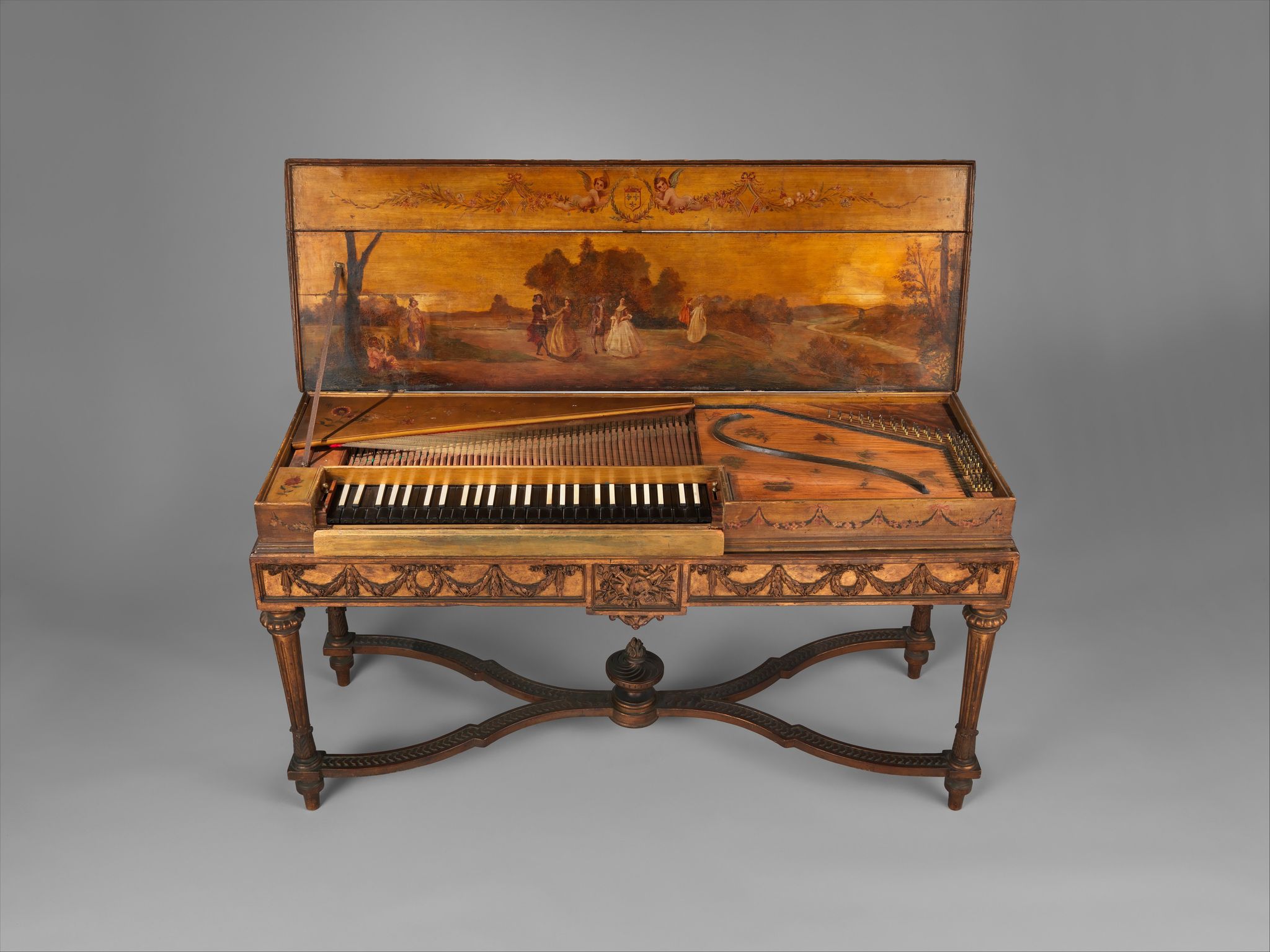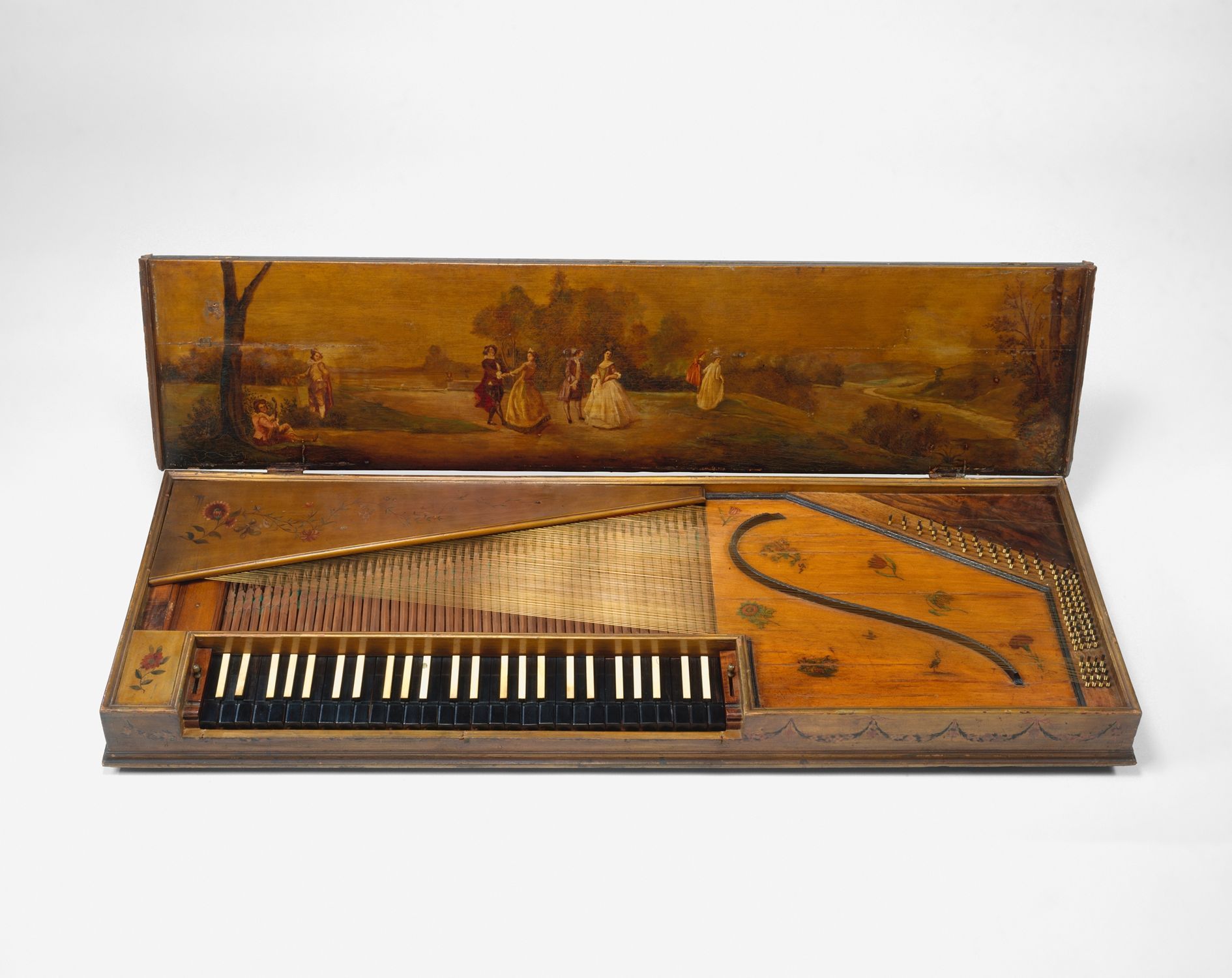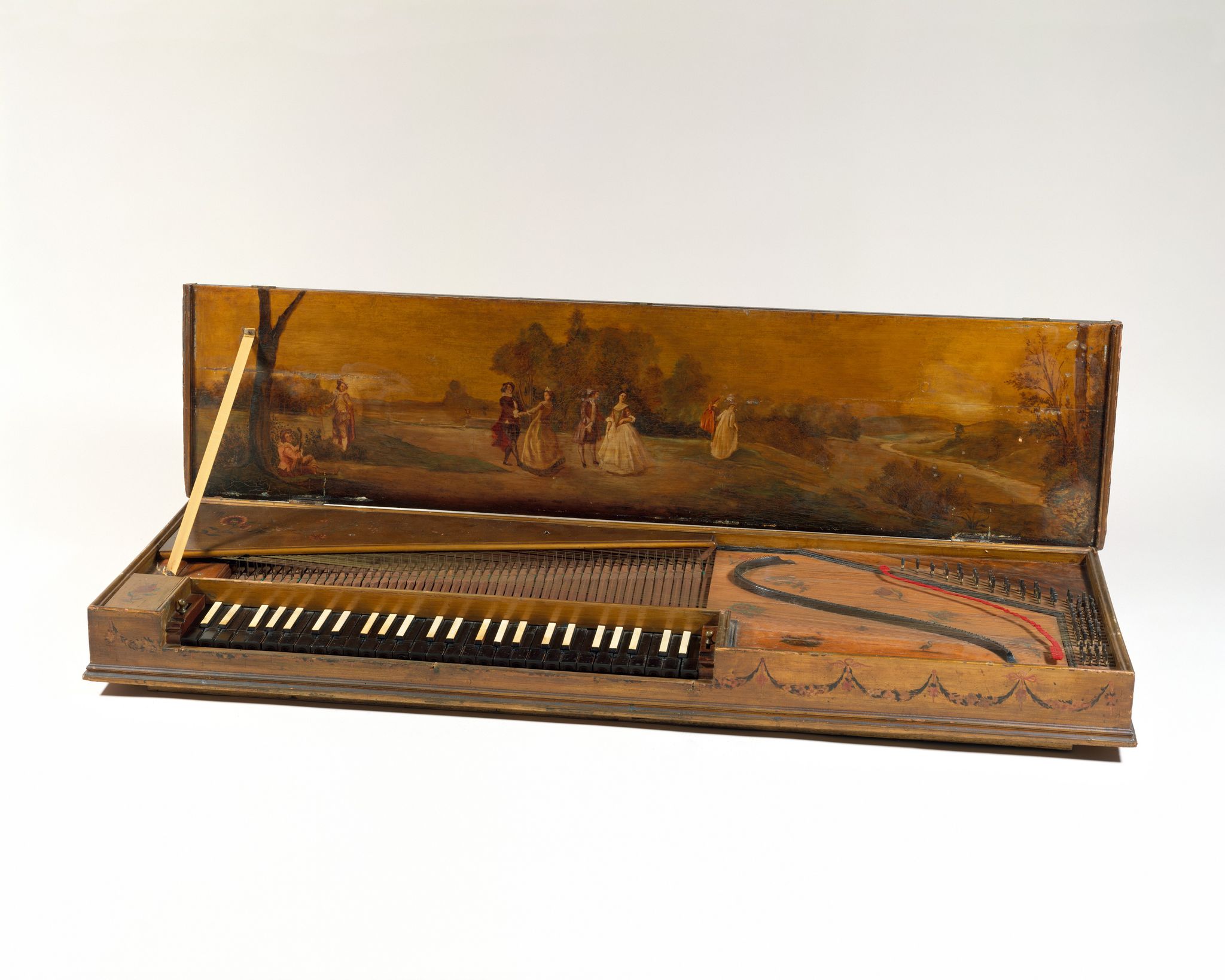



Clavichord
This instrument is one of two known clavichords made by Kintzing, who also worked with the cabinetmaker David Roentgen. It has an unusual feature that uses a second separate row of tangents that are activated by knobs on either side of the keyboard. When engaged, these tangent raise the strings and stay in contact with them. When the keys tangents are played the sound of the strings is prolonged. This feature is known as a pantalon stop and was inspired by the popularity of the hammered dulcimer and the famous eighteenth century virtuoso Pantaleon Hebenstreit.
Clavichords were built as far back as the early fifteenth century, and perhaps earlier. This most personal, simplest, and quietest of European keyboard instruments was the perfect vehicle for music pedagogy, keyboard practice, and composition throughout its 400-year history. The action of the clavichord is relatively simple: the finger depresses a key which, working as a lever, causes its opposite end to rise so that a metal tongue (or tangent) hits a metal string, causing it to resonate. When the key is released, the string is damped. The clavichord is very quiet compared to the harpsichord or piano because of the inefficiency of its sound production, with the tangent hitting the string at the end of its resonating length, rather than in the middle. The tangent mechanism, however, allows a player to achieve a range, albeit narrow, of louder and softer tones as well as special effects like bebung, a form of vibrato, so that the clavichord was and is valued for its intimate expressiveness. Earlier clavichords were fretted, that is, a single string might be used to create several different notes, depending on where a tangent struck it. Unfretted clavichords, with a single note per string, came into use in the late seventeenth century.
Technical description: Unfretted clavichord, C-e3, 2-piece ebony naturals with 4 scribe lines, ebony arcades, bone-covered accidentals, Pantalon stop divided treble-bass and operated by knobs on walnut keyboard end blocks, ebonized bridge, softwood case painted gold in 19th century and decorated in 18th-century style, decoupage ornaments glued on varnished soundboard, walnut (veneered?) wrestplank and right-rear corner block, hinged string-box cover with no. 7 (?) penciled inside, on later stand.
Credit: Purchase, The Crosby Brown Collection of Musical Instruments, by exchange; Rogers Fund; The Barrington Foundation Inc. Gift; Gifts of Risa and David Bernstein, Carroll C., Beverly and Garry S. Bratman, Miss Alice Getty, and Erica D. White, by exchange; and funds from various donors, by exchange, 1986
1763
Wood, ebony, bone, walnut, paint, metal
10.1 x 138.2 x 46.3 cm
1986.239a-b
Image and text © Metropolitan Museum of Art, 2025
Where you'll find this

The Metropolitan Museum of Art
Permanent collection
